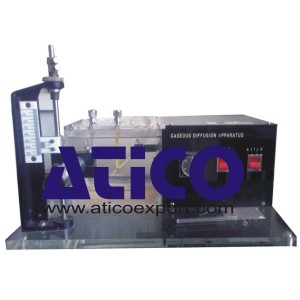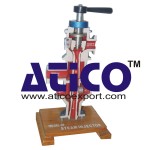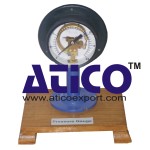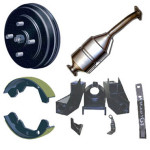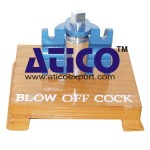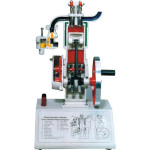Gaseous Diffusion Coefficient Apparatus
Description:
- A small quantity of the volatile liquid to be investigated is placed in a capillary tube, which is positioned in a heated metal block. The block is heated by an electric cartridge
- heater and kept at a constant temperature using an electronic control loop.
- A stream of air is passed across the top of the capillary tube, with a stationary layer of air above the liquid surface, creating a partial pressure difference between the liquid surface and the flowing air stream. As vapour diffuses from the liquid into the air stream, the amount of liquid in the tube reduces and the phase boundary between the liquid and the air drops. Measurement of how this phase boundary changes with time enables the molar mass transfer rate to be determined.
- A slot in the heater block enables the phase boundary to be observed using a high definition microscope. This micro-scope produces high definition images onto a standard windows computer (not supplied).
- The software provided with this microscope includes highly accurate measurement and an automated time lapse facility (either as video or multiple still images).
Instruction Capabilities:
- Direct measurement of mass transfer rates in the absence of convective effects
- Use of gas laws to calculate concentration differences in terms of partial pressures
- Use of Fick’s Law to measure diffusion coefficients in the presence of a stationary gas
- Measurement of the effect of temperature on diffusion coefficients
- Gaining familiarity with the use of laboratory instruments to achieve accurate measurements of data required for industrial process design
- Investigation into diffusion coefficients of alternative fluids

